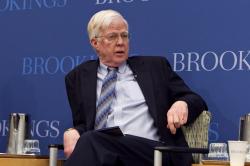Abstract
All observers agree that Social Security reform is needed restore the program?s solvency. This paper examines the impact of alternative reforms on Social Security finances, on the wider U.S. economy, and on workers who contribute to and receive benefits from the program. In one reform we consider, Social Security benefits are eventually reduced about one-third so that benefits can be financed with the present 12.4 percent payroll tax rate. Workers are required to contribute an additional 2 percent of their wages to a new defined-contribution pension. We embed Social Security’s finances in a neoclassical growth model and show how additions to Social Security and defined-contribution pension reserves, if they are saved, can increase the future growth of productivity and wages and reduce the rate of return on capital. These economy-wide impacts in turn affect the lifetime wages and pensions of workers born in successive generations. They have differing effects on workers depending on workers? relative earnings and the trend in their earnings over their careers. Our model includes a microsimulation component to measure these effects on individual workers.
Our findings suggest that scaling back traditional Social Security and replacing part or all of it with defined-contribution pensions can potentially increase national saving over a very lengthy horizon, thus lifting the domestic capital stock and wages. The potential benefits are larger for high-wage workers than for average- and low-wage workers. Because of the potential impact of this reform on the U.S. capital-labor ratio, real capital returns might be adversely affected by this reform, reducing the rate of return workers will obtain in their defined-contribution pension accounts. Our results also imply that generations which will retire before about 2035 would enjoy higher lifetime pensions and net incomes under a policy that maintains Social Security benefits with tax hikes. That is, generations that will retire over the next 30 or 40 years would be better off under a policy that preserves Social Security through tax hikes than under a policy that scales back benefits and partially replaces them with benefits from a new defined-contribution system.
The Brookings Institution is committed to quality, independence, and impact.
We are supported by a diverse array of funders. In line with our values and policies, each Brookings publication represents the sole views of its author(s).




